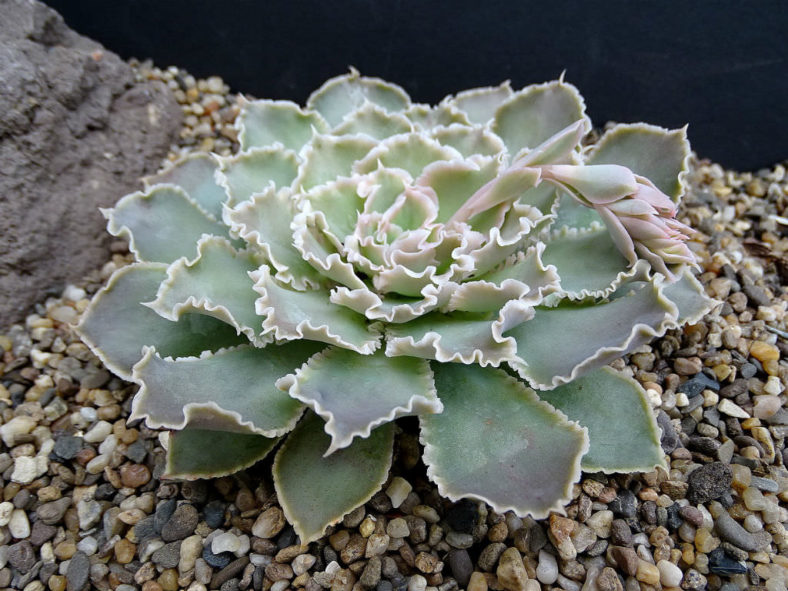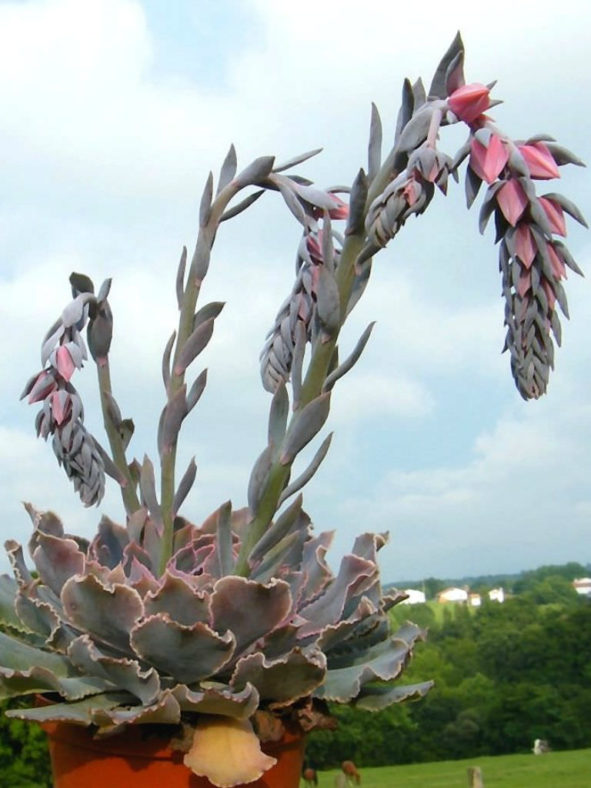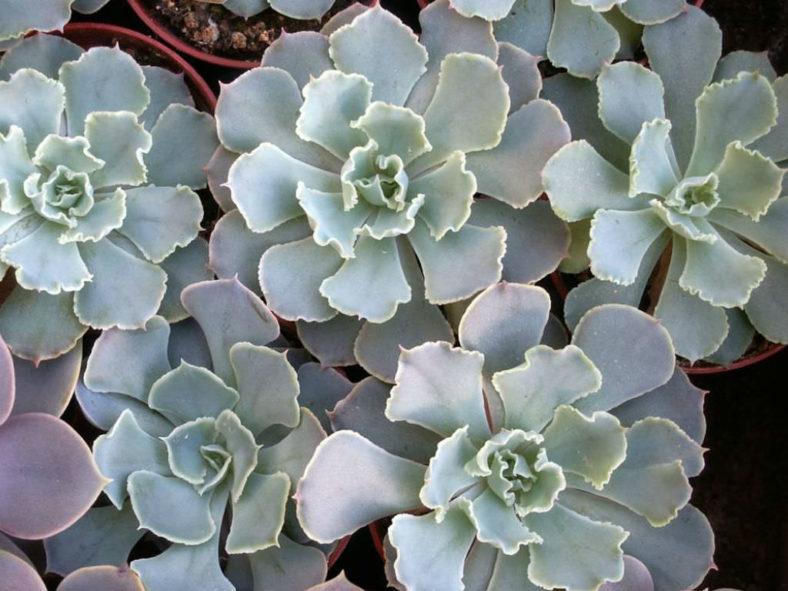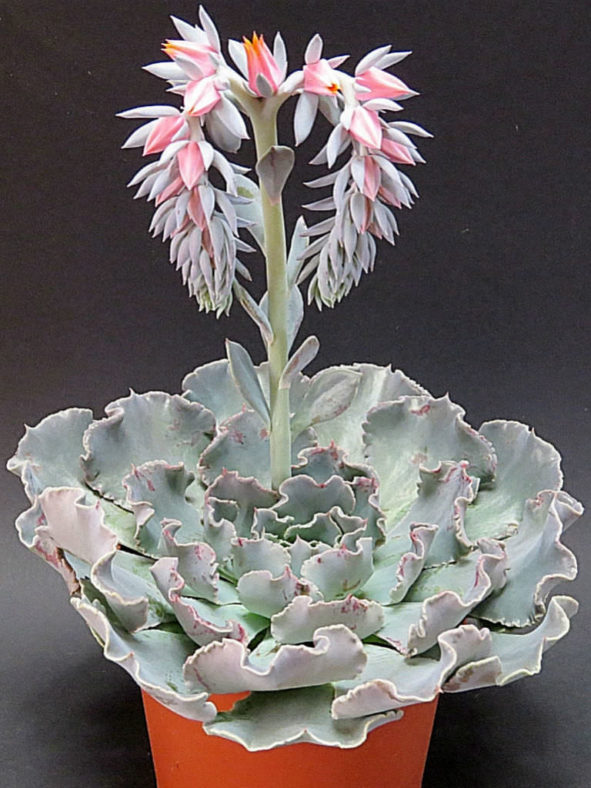Scientific Name
Echeveria shaviana E.Walther
Common Name(s)
Mexican Hens, Mexican Hens Echeveria, Mexican Hens and Chicks
Scientific Classification
Family: Crassulaceae
Subfamily: Sempervivoideae
Tribe: Sedeae
Genus: Echeveria
Etymology
The specific epithet "shaviana (shaf-ee-AH-nuh)" refers to the Missouri Botanical Garden, also informally known as Shaw's Garden, named after the founder and philanthropist Henry Shaw (1800-1889).
Origin
Echeveria shaviana is native to northern Mexico. It occurs in the mountainous areas of Nuevo Leon and Tamaulipas.
Description
Echeveria shaviana is an attractive succulent that forms rosettes of greyish-green to blue-gray leaves with whitish, wavy, crinkled margins. The short-stemmed rosettes can grow up to 6 inches (15 cm) in diameter and produce offsets, forming a clumping mound with age. The leaves take on a pink hue when exposed to full sun.
The bell-shaped flowers appear on branched stalks that can grow up to 1 foot (30 cm) long in summer. They are pink on the outside and yellow to yellow-orange on the inside and can reach up to 0.5 inches (1.3 cm) in lenght and 0.3 inches (0.7 cm) in diameter.

How to Grow and Care for Echeveria shaviana
Soil: Echeverias need a potting soil mix that drains quickly. Many growers will create their own mix. However, commercial cactus and succulent potting soil will work fine.
Light: These succulents prefer full sun to partial shade. However, avoid drastic sunlight changes and full afternoon sun, especially in summer. When your succulents are inside during the winter, put them near the brightest window in your home.
Hardiness: Echeveria shaviana can withstand temperatures as low as 25 to 50 °F (-3.9 to 10 °C), USDA hardiness zones 9b to 11b.
Watering: When and how to water is crucial for Echeveria care. They do not like to be kept too wet, but they also do not like to be kept too dry. Therefore, the "soak and dry" method is the preferred schedule for watering Echeverias.
Fertilizing: Echeverias grow well without fertilizer but may benefit from the extra nutrients.
Repotting: Repot when needed in the spring or early summer.
Propagation: Echeverias are one of the easiest succulents to propagate. They are usually propagated from offsets or leaves but can also be grown from stem cuttings and seeds.
Learn more at How to Grow and Care for Echeveria.
Toxicity of Echeveria shaviana
Echeverias are safe around pets and humans, although it is not advisable to eat them.
Hybrids of Echeveria shaviana
- Echeveria shaviana 'Pink Frills'
- Echeveria shaviana 'Truffles'
- Echeveria 'Black Prince'
- Echeveria 'Morning Beauty'
- Echeveria 'Pinky'
- Echeveria 'Swan Lake'
- ×Graptoveria 'Spirit of '76'
Links
- Back to genus Echeveria
- Succupedia: Browse succulents by Scientific Name, Common Name, Genus, Family, USDA Hardiness Zone, Origin, or cacti by Genus
Photo Gallery
Click on a photo to see a larger version.


